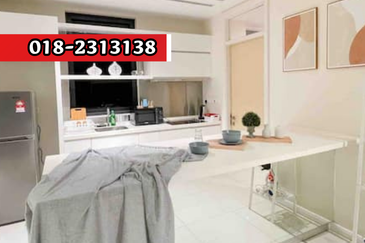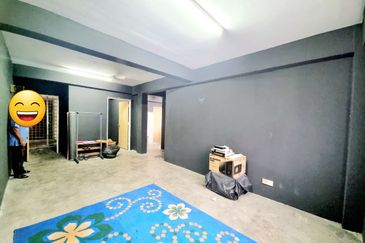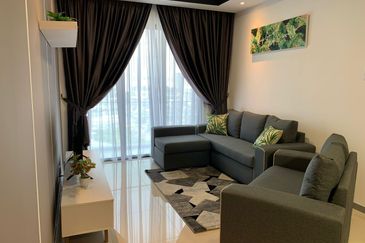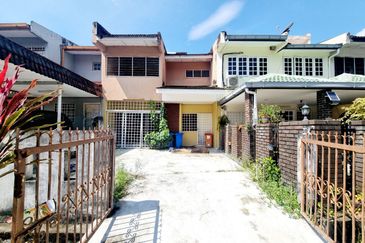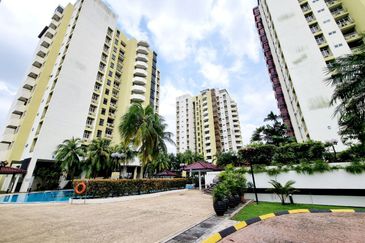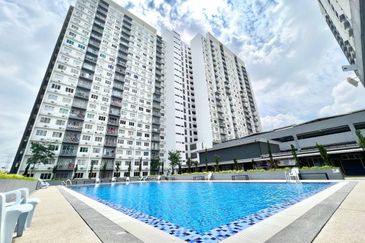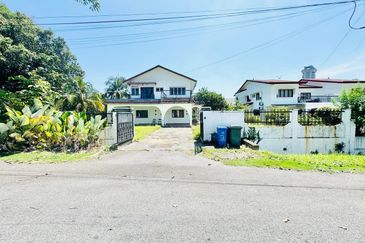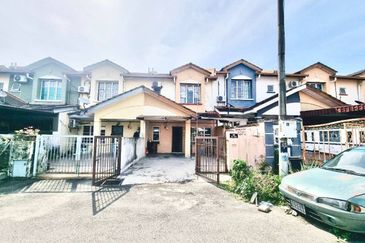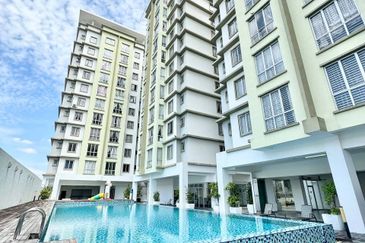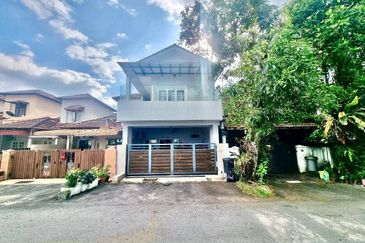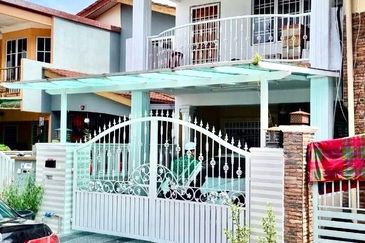 How will property development fare in Kuala Lumpur city in the future? Land for development is fast disappearing. Green lungs should not be touched. So, where do we go from here?
How will property development fare in Kuala Lumpur city in the future? Land for development is fast disappearing. Green lungs should not be touched. So, where do we go from here?
Urban renewal is the answer. And City Hall is taking the lead to facilitate the redevelopment of some older parts of KL or brownfield sites that had been built in the past without proper planning.
“How much can we develop within KL? We cannot reclaim land like Singapore. We are already becoming saturated with new developments, so we have to go for brownfields. I think we cannot encroach on greenfields anymore, we should not touch them,” Datuk Ahmad Fuad Ismail, who will be clocking in his 100th day in office on March 24 as Kuala Lumpur’s mayor, tells City & Country.
Kuala Lumpur City Hall (DBKL) has identified for urban renewal 35 potential sites comprising a total of 547.92 hectares. These are mostly privately owned land in the heart of the city (see table on Page 6). Undertaking redevelopment will not be easy and may even be controversial as can be seen in efforts to redevelop Kampung Baru. Ahmad Fuad, the former Housing and Local Government Ministry secretary-general, however, believes that the strategy can succeed if the local authority is transparent and open about its intentions and plans to the people.
“We need to explain to them, let them know why you are doing it, what are the benefits, how much you are going to spend and get their opinion because these things are important. One cannot simply do something first and then tell the people it is for them. We can no longer do that,” he says.
How soon the plan can get off the ground is not clear but what is definite is that Ahmad Fuad is determined to give it his best shot. It will not be easy especially to amalgate individual plots of land, he concedes, stressing that the role of DBKL will be that of a facilitator. All existing owners of the respective properties will have a say or, if they like, a role in the redevelopment efforts, he says.
This is how Ahmad Fuad sees the plan unfolding. Start with a small pilot area. DBKL will draw up the plans and facilitate the land acquisition. “We do the acquisition but the developer has to be ready with the money. Initially, you pay 50% and once acquisition is completed, you pay in full and put it under stakeholders.”
The landowners could be paid in cash or equity or they could participate in the development. “Say, in an area of 10 acres, we have 20 owners of 2-storey shophouses on a 30,000 sq ft site. On this plot, we can have a 30-storey building and if we have 15 plots, we can have 15 beautiful buildings.
“In order for us to have open spaces, trees, walkways and for redevelopment to be viable, the plot ratio has to be increased,” he says.
“We have a lot of potential here for our developers. Our developers go overseas to find opportunities, but KL has great potential for them,” he adds.
Ahmad Fuad assures that City Hall will be transparent and will seek the people’s views on redevelopment. “We will be the trustee. We choose only good property development companies, because we cannot take the risk of choosing less reputable ones.”
He acknowledges that people are sceptical. “They want to know who is actually going to develop. They are afraid they will lose their land and they cannot do anything about it. But we do not allow that to happen. If the returns are good, they can participate, too. We have to be the trustee,” he says, adding, “We have to be the catalyst, the moderator and the facilitator so that the private sector can come into the picture.”
World-class city
There is no denying that the private sector plays a critical role. As the mayor says, although DBKL is spending money on infrastructure like building covered walkways or resurfacing roads, it is still not enough. “We do not have the money for overall development and this is where the private sector must spend. So this is an opportunity for developers to work together with us for the overall development of KL. We have to acknowledge that developers can contribute. The only thing is, it must be balanced.”
To be a world-class city, the overall development must be evenly spread. KL is not just about KLCC or Bukit Bintang or Taman Tun Dr Ismail. These are just parts of KL which we are proud of, but many other areas are in a “bad” state, says Ahmad Fuad, citing places such as Chow Kit, Petaling Street and Kampung Baru.
“One must understand that previously there was no proper planning in these areas, so parking and open spaces may not have been taken into consideration. Hence, the need for redevelopment where we can put in proper public amenities and more green spaces,” says Ahmad Fuad.
He knows too well that there will be those who will resist development. But he makes a cogent argument: “If we are able to plan for more green spaces, then these areas will be better than before. If people refuse change for the sake of the environment, it is all right. But if they reject progress, reject development, then we will not move forward. If everyone wants the status quo to remain, then how?”
He assures that some areas will be restored and identified as heritage sites, while sustainable development will be DBKL’s priority, going forward.
“We go for sustainable development. Places you cannot develop, you should not develop but where you can redevelop, you should redevelop. We go for redevelopment but within limits. There is a limit to everything. This is where we draw the line.”
He stresses that the city cannot remain the way it is today if it wants to become world-class. To achieve this status, one of the goals is to make KL an international commercial and financial hub. This means attracting the international community to invest, visit, shop, play and stay here.
“We want KL to be a vibrant city for fashion, shopping, business, meetings, conventions and exhibitions. When foreign visitors come here, they need a place to stay. They will only come if we offer them a good standard of living, otherwise they won’t come because they have choices. Why do they go to Singapore? Is it not expensive? If we could attract people to come here and spend, there will be a trickle-down effect on employment, new businesses, and so on.”
Efficient public transport
Of course, a world-class city must have a good and efficient public transport system. This is probably the biggest challenge for the city, says Ahmad Fuad. Every day about one million cars come into the city centre. Reducing the number of cars will ease congestion. So the long-term plan is to encourage people to park their cars at the nearest public transport station, such as an LRT station, and take the train to the city.
The recent RM100 million allocation announced under the RM60 billion stimulus package for covered walkways and skyways to connect major buildings in the city centre is one measure to make KL pedestrian-friendly. “When it is convenient for you to take public transport or to walk, you will not want to drive,” says Ahmad Fuad. Since he became mayor, his priorities are to ensure proper maintenance of basic facilities and amenities such as garbage collection, open spaces and green lung, roads, street lights and neighbourhood security, among others.
The mayor, known for being approachable, also wants to keep his ear to the ground. He has begun meet-the-residents sessions with local resident associations, the first being with those from the Segambut constituency on March 18.
This article appeared in Options, the lifestyle pullout of The Edge Malaysia, Issue 747, March 23-29, 2009.
TOP PICKS BY EDGEPROP

Apartment Putra 1 (Pangsapuri Putra 1)
Kajang, Selangor

Astana Alam Apartment
Bandar Puncak Alam, Selangor
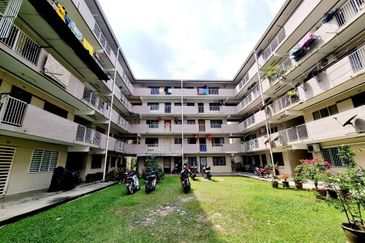
Seksyen 4 Wangsa Maju Flat
Wangsa Maju, Kuala Lumpur
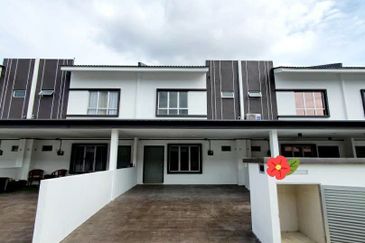
Rentak Perdana @ LBS Alam Perdana
Bandar Puncak Alam, Selangor


